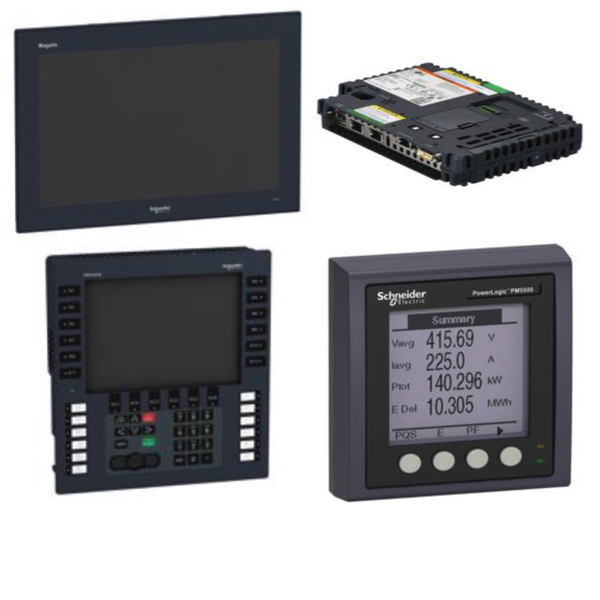Operator Interface

Operator Interface (OI), also referred to as Human Machine Interface (HMI), devices allow humans to interact with automated systems. OI hardware includes touchscreens, displays, keypads and communication ports. OI software is PC-based and is used to transfer and configure applications to and from the OI.
Digital panel meters read an input signal and display it in digital form. These meters are usually mounted to a control panel and show temperature, pressure, voltage, etc.
HMI Screens allow operators to interact with automated systems by centralizing and digitizing data received from input and output sensors. This data is then displayed for the operator on the screen where it can be easily managed and controlled.
Industrial PCs are designed to withstand extreme environmental conditions such as high temperatures, vibration, electromagnetic interference and dirt. Industrial PCs can run powerful automation software and control complex applications with efficiency and reliability.
HMI vs OIT, What's the Difference
Human Machine Interface (HMI) is a software interface that allows operators to interact with various pieces of electrical hardware and controls systems. HMI typically utilizes monitors or screens to display information, which are referred to as HMI screens. The screens are not the actual HMI, but are a tool used to display HMI software. For example, electrical enclosures often have screens mounted on the outside of them to provide users with information about ongoing process and to allow users to make changes to the system.
Operator Interface Terminal (OIT) typically displays basic information about the electrical hardware that it is attached to. It provides only local information about the environment it is interfacing with and allows control and monitoring for that one piece of hardware, not an entire system.

